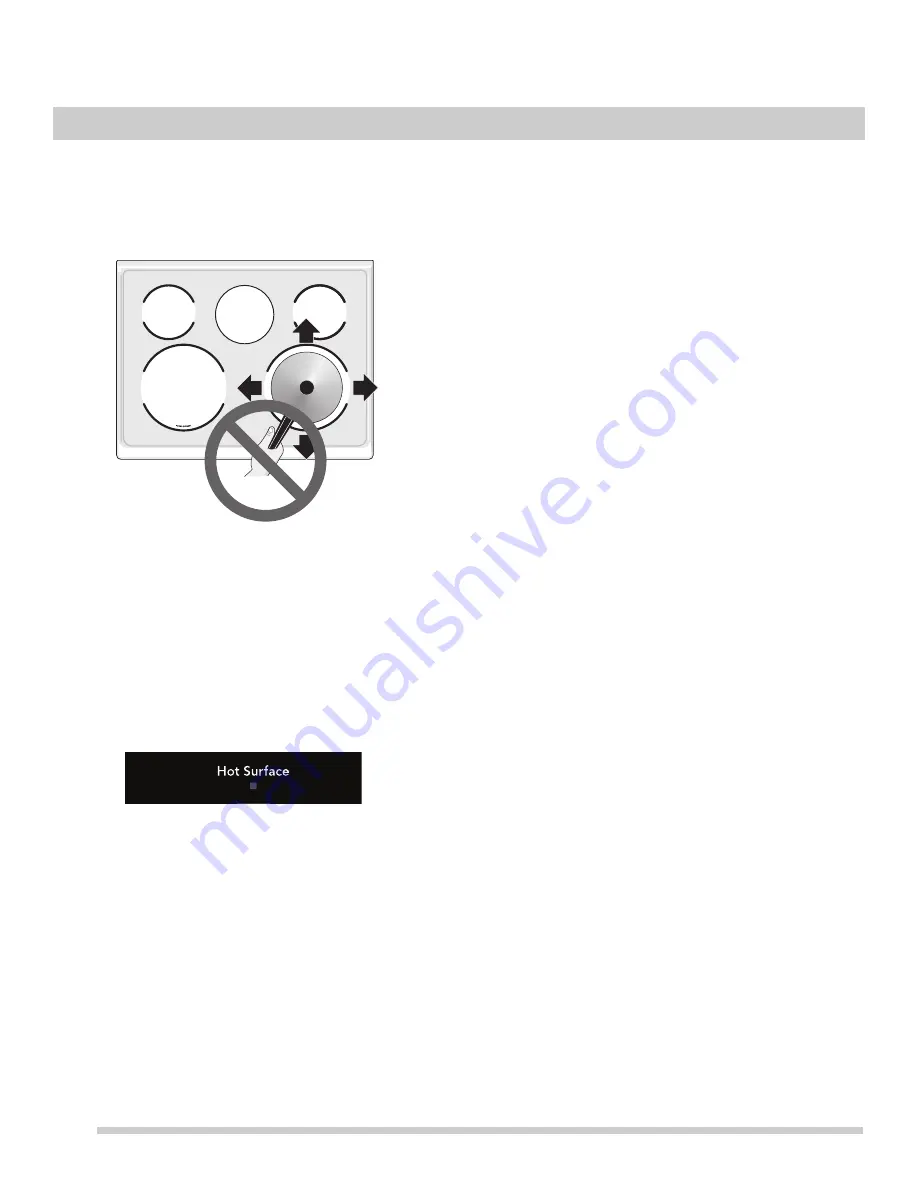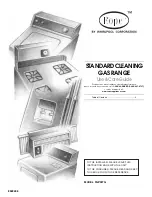
18
SETTING SURFACE CONTROLS
Moving Cookware on a Smooth Cooktop
Always lift cookware before moving on the ceramic glass
smoothtop. Cookware that has a rough or dirty bottom can
mark and scratch the ceramic glass surface. Always start
with clean cookware.
Pan Preheat Recommendations
Induction cooking may decrease the amount of time
required to preheat a piece of cookware compared to
cooking on a radiant or gas cooktop.
Remember that induction surface cooking will initially heat
the cookware very quickly.
•
The Hot Surface indicator light will turn on when heat is
detected in a cooking zone and will remain on until the
cooktop surface has cooled sufficiently.
•
If cookware is moved away from the center of an active
cooking zone, the cooking zone will become inactive.
The setting display will flash until proper cookware is
placed in the center of the cooking zone. When
cookware is centered on the cooking zone, the zone will
resume heating. If the cooking zone has no cookware
for three minutes, it will automatically shut off.
Home Canning
Be sure to read and observe all the following points when
home canning with your appliance. Check with the USDA
(United States Department of Agriculture) Web site and be
sure to read all the information they have available as well
as follow their recommendations for home canning proce-
dures.
•
Use only a completely flat bottom canner with no ridges
that radiate from the bottom center when home
canning. Heat is spread more evenly when the bottom
surface is flat. Use a straight-edge to check the canner
bottom.
•
Make sure the diameter of the canner does not exceed
1 inch beyond the cooking zone markings or burner.
•
It is recommended to use smaller diameter canners on
electric coil and ceramic glass cooktops and to center
canners on the burner grates.
•
Start with hot tap water to bring water to boil more
quickly.
•
Use the highest heat seating when first bringing the
water to a boil. Once boiling is achieved, reduce heat to
lowest possible setting to maintain that boil.
•
Use tested recipes and follow instructions carefully.
Check with your local Cooperative Agricultural
Extension Service or a manufacturer of glass jars for
the latest canning information.
•
It is best to can small amounts and light loads.
•
Do not leave water bath or pressure canners on high
heat for an extended amount of time.
















































